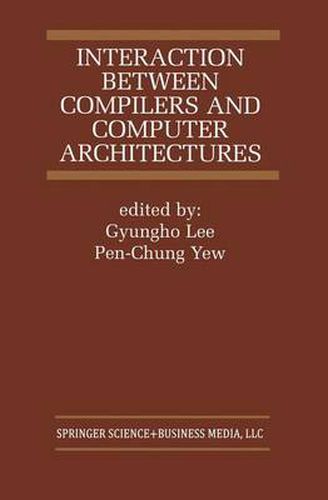Readings Newsletter
Become a Readings Member to make your shopping experience even easier.
Sign in or sign up for free!
You’re not far away from qualifying for FREE standard shipping within Australia
You’ve qualified for FREE standard shipping within Australia
The cart is loading…






This title is printed to order. This book may have been self-published. If so, we cannot guarantee the quality of the content. In the main most books will have gone through the editing process however some may not. We therefore suggest that you be aware of this before ordering this book. If in doubt check either the author or publisher’s details as we are unable to accept any returns unless they are faulty. Please contact us if you have any questions.
Effective compilers allow for a more efficient execution of application programs for a given computer architecture, while well-conceived architectural features can support more effective compiler optimization techniques. A well thought-out strategy of trade-offs between compilers and computer architectures is the key to the successful designing of highly efficient and effective computer systems. From embedded micro-controllers to large-scale multiprocessor systems, it is important to understand the interaction between compilers and computer architectures. The goal of the Annual Workshop on Interaction between Compilers and Computer Architectures (INTERACT) is to promote new ideas and to present developments in compiler techniques and computer architectures that enhance each other’s capabilities and performance. Interaction Between Compilers And Computer Architectures is an updated and revised volume consisting of seven papers originally presented at the Fifth Workshop on Interaction between Compilers and Computer Architectures (INTERACT-5), which was held in conjunction with the IEEE HPCA-7 in Monterrey, Mexico in 2001. This volume explores developments and ideas for better integration of the interaction between compilers and computer architectures in designing modern processors and computer systems. It is suitable as a secondary text for a graduate level course, and as a reference for researchers and practitioners in industry.
$9.00 standard shipping within Australia
FREE standard shipping within Australia for orders over $100.00
Express & International shipping calculated at checkout
This title is printed to order. This book may have been self-published. If so, we cannot guarantee the quality of the content. In the main most books will have gone through the editing process however some may not. We therefore suggest that you be aware of this before ordering this book. If in doubt check either the author or publisher’s details as we are unable to accept any returns unless they are faulty. Please contact us if you have any questions.
Effective compilers allow for a more efficient execution of application programs for a given computer architecture, while well-conceived architectural features can support more effective compiler optimization techniques. A well thought-out strategy of trade-offs between compilers and computer architectures is the key to the successful designing of highly efficient and effective computer systems. From embedded micro-controllers to large-scale multiprocessor systems, it is important to understand the interaction between compilers and computer architectures. The goal of the Annual Workshop on Interaction between Compilers and Computer Architectures (INTERACT) is to promote new ideas and to present developments in compiler techniques and computer architectures that enhance each other’s capabilities and performance. Interaction Between Compilers And Computer Architectures is an updated and revised volume consisting of seven papers originally presented at the Fifth Workshop on Interaction between Compilers and Computer Architectures (INTERACT-5), which was held in conjunction with the IEEE HPCA-7 in Monterrey, Mexico in 2001. This volume explores developments and ideas for better integration of the interaction between compilers and computer architectures in designing modern processors and computer systems. It is suitable as a secondary text for a graduate level course, and as a reference for researchers and practitioners in industry.